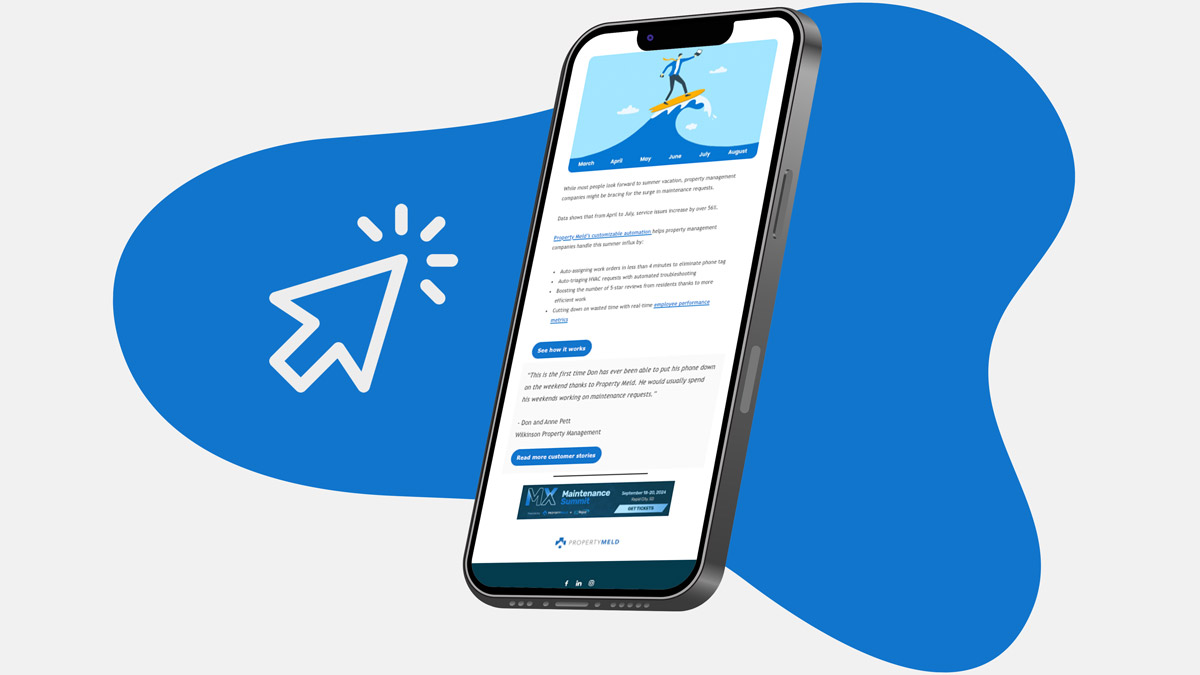Maintenance coordination should be simple and easy – not complicated. We’ll walk you through tips to make your process more efficient.
Imagine what it would be like if your maintenance process ran as smoothly as a conveyor belt. A work-order request enters on one end, and a happy resident exits on the opposite side. The scheduling process occurs without missteps. Owner approvals are requested and accepted immediately. The property manager has perfect visibility into the entire process—no manual follow-up is necessary.
If it were only that easy, right? Well, we are here to tell you it can be. We know the magic happens in the middle—and that’s where many property managers get stressed. It can be overwhelming with phone calls, follow-ups, and spending countless hours chasing down vendors and residents.
You experience inefficiencies within your maintenance process for several different reasons. You might spend way too much time on the phone coordinating schedules between vendors and residents.
Then, a lack of transparency and visibility between all parties leads to a big, confusing mess.
Lastly, somewhere within this process, resident satisfaction takes a back seat. So you bite the bullet and hire another maintenance coordinator to manage your accounting program’s “automated” maintenance features. But it still fails to move the needle.
- Did the vendor or technician reach the resident and schedule a repair?
- When is the repair happening?
- Is it done?
- Was the resident notified of completion?
- Are they satisfied?
Sound Familiar? Here are some tips to improve your current maintenance coordination process:

Tip #1: Touch base
Take a few minutes to check in with your vendor to confirm that they’ve scheduled the repair on the appropriate date. Vendors are human too. It’s in your best interest to verify the appointment before you have to pick up the pieces from an unhappy resident waiting for a repair.
Tip #2: Set reminders
Set yourself a Google Calendar reminder to follow up with the resident and vendor. By strategically following up at a specific time, you’re able to gain some visibility into the repair request. A brief check-in with the resident can be a great way to increase customer satisfaction.
Tip #3: Request confirmation of completion
Too many property managers rely on an invoice to verify that a repair is complete. Ask your vendors to follow up with you once they’ve completed the work order. A verbal confirmation gives you a step up on your peers in the industry.
Tip #4: Follow-up on satisfaction
Once you receive verbal confirmation that the repair is complete, you have the green light to vet the resident on the quality of the work. There’s nothing more important than catching complaints early before an unhappy resident can leave you a negative online review.
But don’t stop here. Property Meld is a smart maintenance hub that can give you an authentic conveyor belt experience. Our partners experience an average of 60% less time spent on maintenance coordination. With automation, you receive a maintenance request, and our solution goes to work for you.
An intelligent maintenance solution can take your company to the next level.
Ready to take that next step and automate your maintenance process? Connect with one of our experts, and talk about our maintenance solution.






